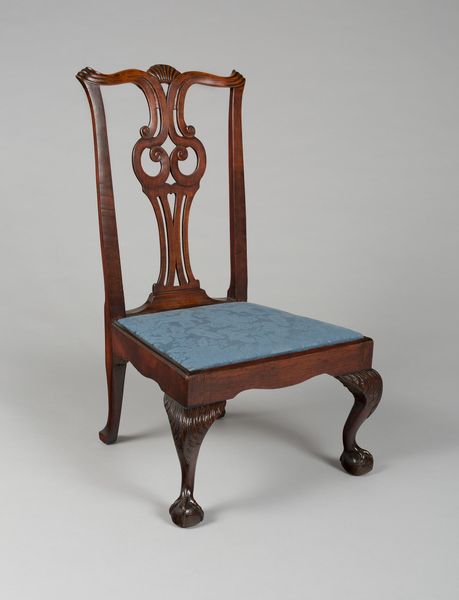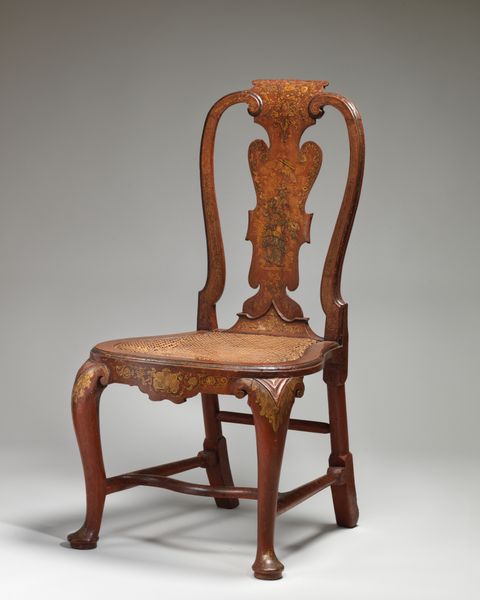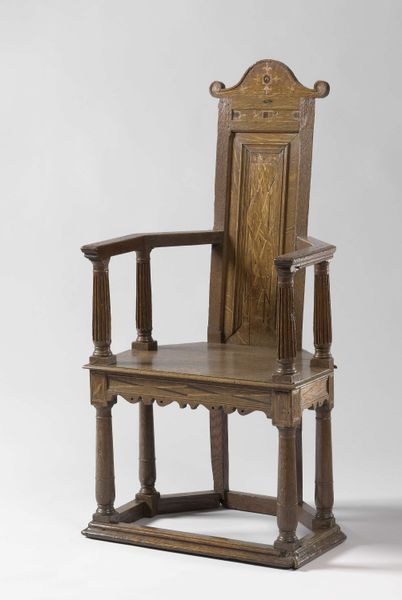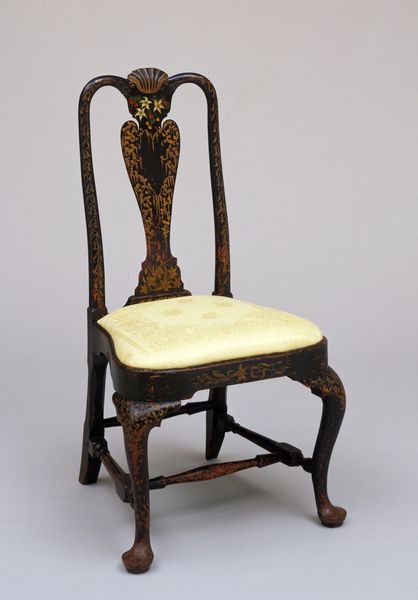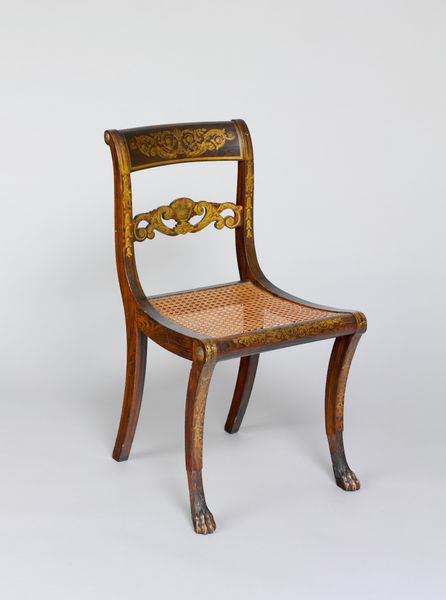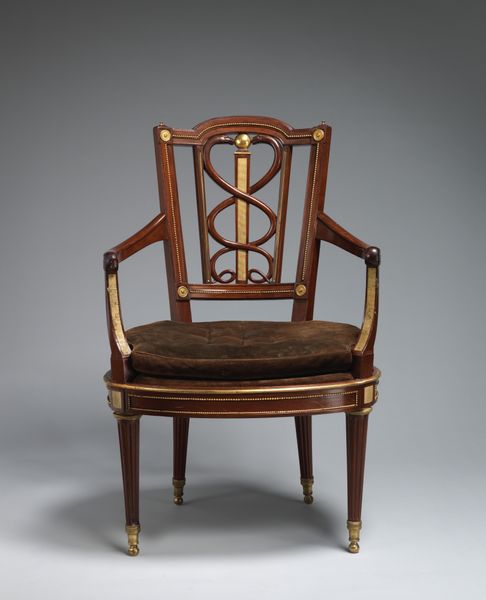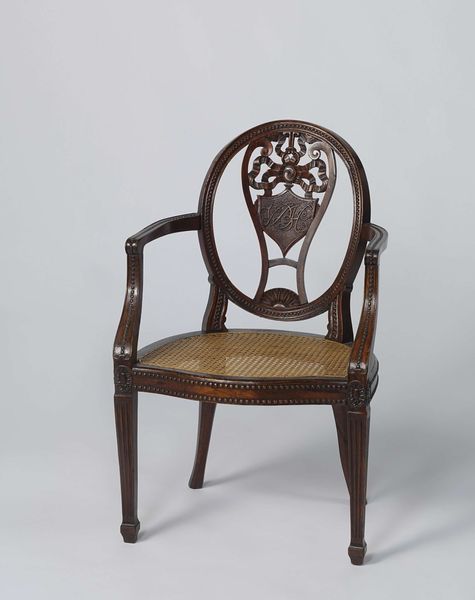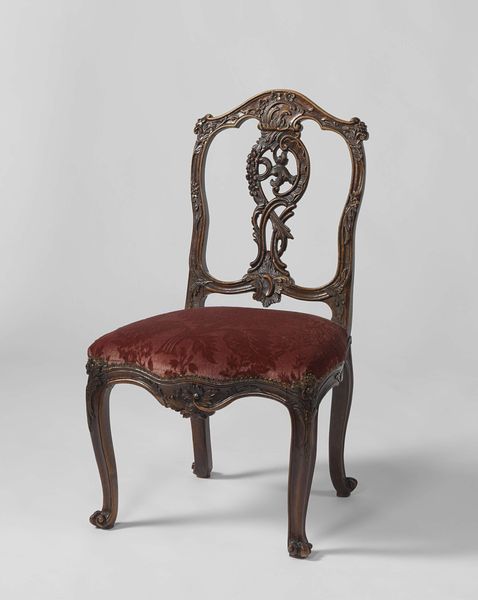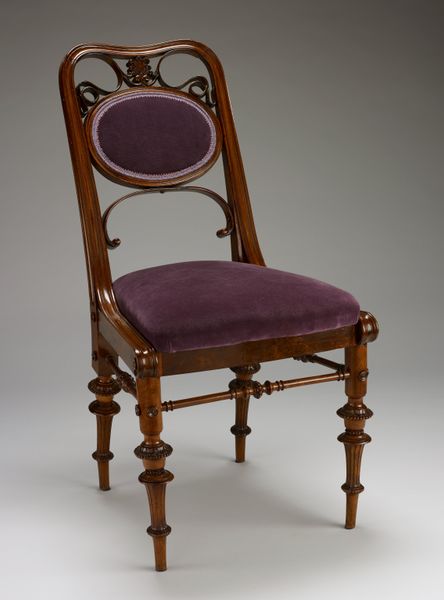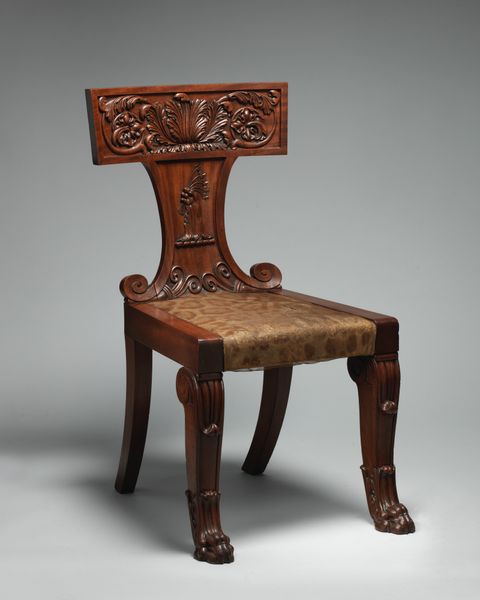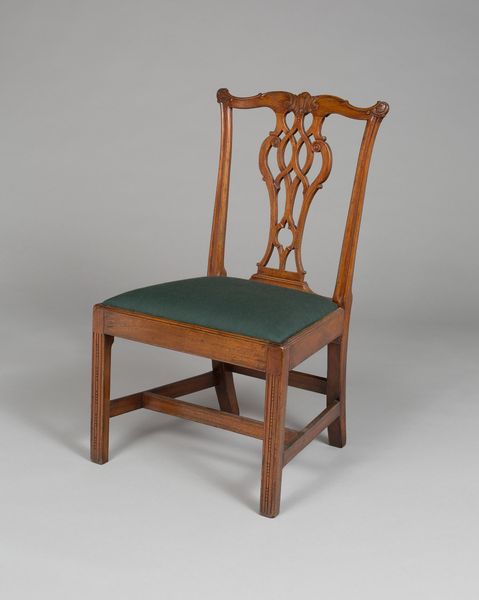
carving, wood
#
carving
#
furniture
#
wood
#
decorative-art
#
rococo
Dimensions: 105.3 × 58.4 × 55.2 cm (41 1/2 × 23 × 21 3/4 in.)
Copyright: Public Domain
Curator: Before us stands an exquisite chair crafted around 1735 by Giles Grendey, currently residing here at The Art Institute of Chicago. The carved wooden frame and woven seat invite closer inspection. Editor: My first thought is "opulence". The detailing is really rich; all of that gilding against the deep red lacquer—it looks like it came straight out of Versailles. Curator: Indeed. Its decorative elements and rococo styling do position it within the opulent tastes of the period, often reflecting the societal elite who would have enjoyed such pieces. But what of those seated within? Who had the privilege to recline on this object of beauty, and what labor underpinned its construction? Editor: That's where I immediately focus: The wood itself, where it came from, who carved it with such skill. The making involved complex techniques, likely with different craftspeople contributing to various parts. The claw-and-ball feet suggest an aspiration towards luxury, but also consider the practical aspect of them distributing weight evenly across a surface. Curator: I see those feet, and I wonder: were they meant to signify power, bestowing on its user an unspoken authority through mimicking animalistic strength? Consider too the gendered implications – the Rococo period often catered to a feminine sensibility, inviting speculation about the identities and influence of women who perhaps used this very chair. Editor: Perhaps! It might also tell us about trade networks – lacquer was an extremely desirable import item at the time. Was Grendey himself directly importing materials, or employing other artisans working with these specific mediums? The labor required, from harvesting the wood to the final application of lacquer, hints at entire systems of making. Curator: It's so fascinating how an object seemingly so simple reveals these layered historical realities. Even now, we bring our own biases and contemporary experiences when engaging with it, complicating narratives further. Editor: Absolutely. Even just considering the way it would have been placed within an interior gives us an insight into social hierarchy, status, and access to resources. We need to ask "how does the materiality of wealth speak silently in its display." It moves me to know that objects carry the unseen traces of so many processes that make up lived reality.
Comments
No comments
Be the first to comment and join the conversation on the ultimate creative platform.

